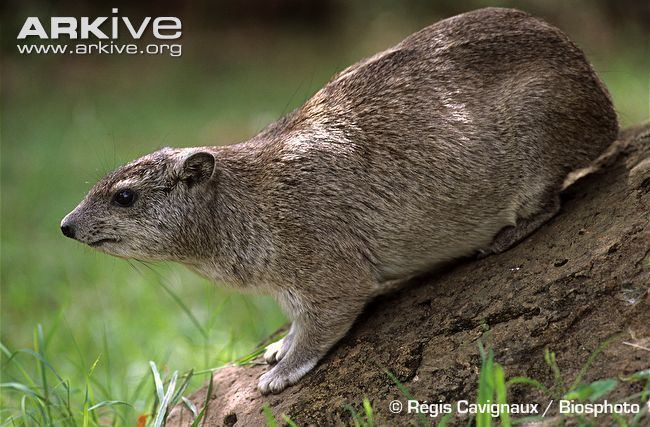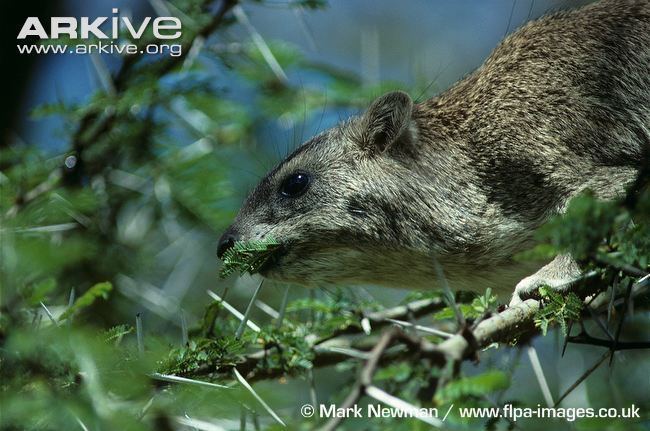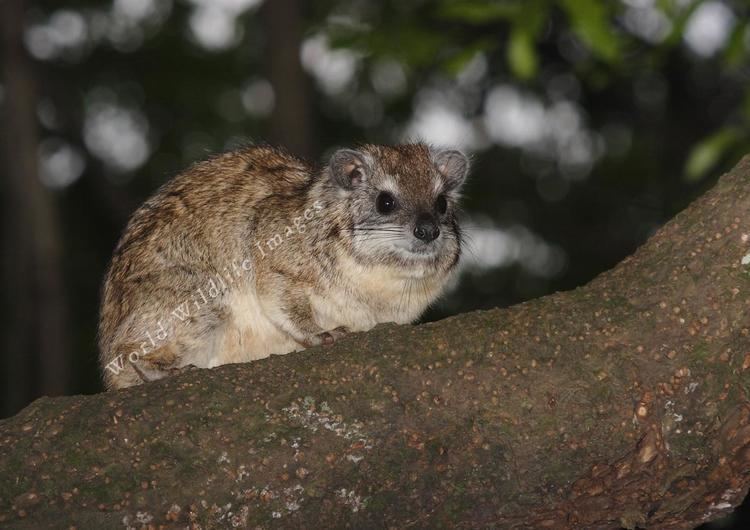Infraclass Eutheria Order Hyracoidea Scientific name Dendrohyrax arboreus Rank Species | Phylum Chordata Superorder Afrotheria Family Procaviidae Higher classification Tree hyrax | |
 | ||
Similar Tree hyrax, Hyrax, Western tree hyrax, Yellow‑spotted rock hyrax, Mammal | ||
Southern tree hyrax kasanka stjernstedt
The southern tree hyrax (Dendrohyrax arboreus) or also known as the southern tree dassie is a species of mammal in the family Procaviidae. The southern tree hyrax is mainly found in the south central eastern side of Africa.
Contents
- Southern tree hyrax kasanka stjernstedt
- Mammals of the world southern tree hyrax
- Description
- Distribution and habitat
- Arboreal behavior
- Predation
- Diet
- Reproduction and life cycle
- Taxonomy
- References

Mammals of the world southern tree hyrax
Description

The southern tree hyrax has a guinea pig-like appearance. It has long, soft, grey-brown fur that covers the body, while the underside is paler. Hairs are lighter near their tips and the ears have a fringe of white hair. They weigh about 2.27 kg on average, and have an average length of 520 mm.
Distribution and habitat

It is found in Angola, Democratic Republic of the Congo, Kenya, Mozambique, South Africa, Tanzania, and Zimbabwe. Its natural habitats are temperate forests, subtropical or tropical dry forests, subtropical or tropical moist lowland forests, subtropical or tropical moist montane forests, moist savanna, and rocky areas. It may be found at elevations up to 4500 m
Arboreal behavior

The tree hyrax lives in trees and is mostly nocturnal, as opposed to the rock hyrax which lives among rocks and is mainly diurnal. It occurs singly, in pairs or in small groups, favouring hollow trees and dense foliage. Though an extremely able climber, it is awkward on the ground and walks with some difficulty. Its extraordinary call, heard mainly at night, is a series of blood-curdling shrieks building up to a crescendo. These territorial calls are produced mainly by the males.
Predation

Martial and tawny eagles, leopards, lions, jackals, spotted hyenas, and snakes prey upon the southern tree hyrax. In Rwanda, the most common predators are feral dogs. The limited amount of time the hyrax spends on the ground at night may be a predator avoidance strategy. Humans sometimes also eat the hyrax.
Diet
The southern tree hyrax is a herbivore. It consumes many different parts of the plants such as the leaves, petioles, twigs, shoots, fleshy fruit, and hard seeds. Individual species are too many to list, but Hagenia abyssinica, Hypericum revolutum, and Podocarpus falcatus are the most common.
Reproduction and life cycle
Milner and Harris reported that they were unable to determine the mating system but speculated that it may be facultative monogamy/polygyny. After a gestation period of 7 months, 1-2 young are born. At birth they are well developed and they weigh approximately 380 g (13.4 oz.). The southern tree hyrax reaches maturity at about 12 months old.
Taxonomy
It has been suggested that Dendrohyrax validus, commonly called the eastern tree hyrax, be included in Dendrohyrax arboreus until detailed taxonomic research is conducted (Shoshani, in Wilson and Reeder 2005). However, the most recent treatment of the genus Dendrohyrax retains D. validus as a full species (for now)
